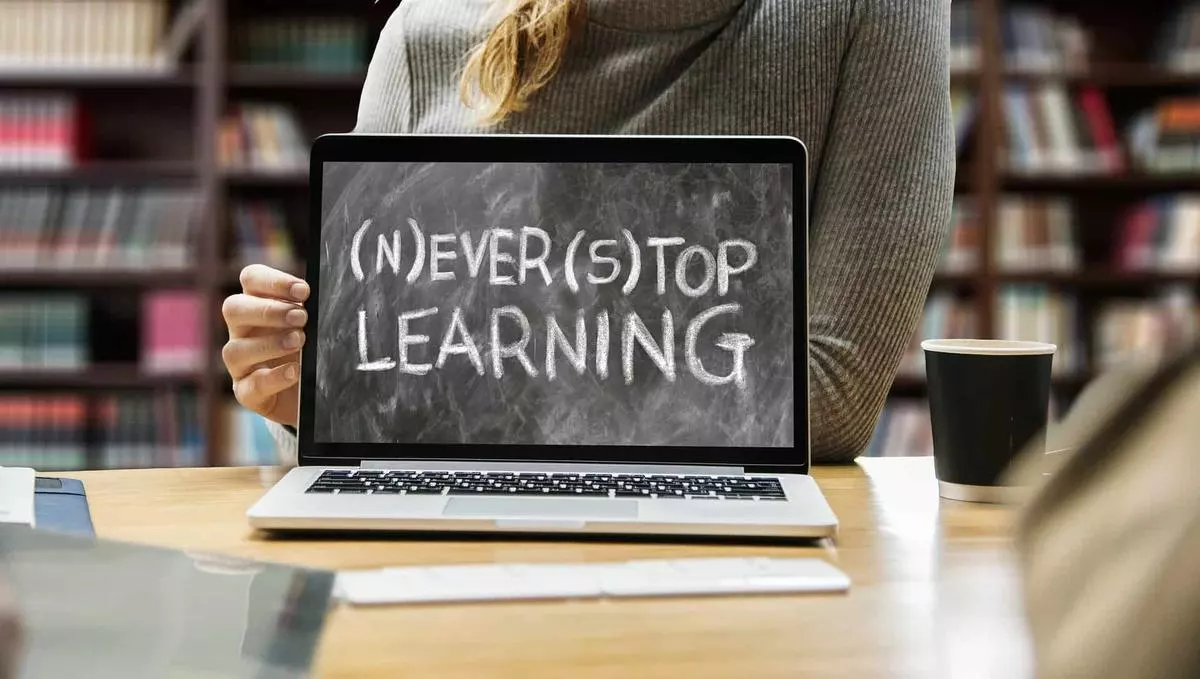
Blended learning isn’t new, but it has gained popularity since the pandemic. There is always a debate about whether online learning is better than traditional classroom learning. Consequently, the middle ground given to us is blended learning. It combines the best of both worlds.
Blended learning allows learners to build their confidence and interpersonal skills while getting to know all of their fellow learners. At the same time, it doesn’t force the learners to spend time or make an effort to attend a session every day. They can modify their schedules and finish the training and assessments at their convenience.
Moreover, blended learning caters to the different learning needs of corporate learners, resulting in better learning and retention.
There’s more to blended learning than just combining online and offline lectures. Here is what blended learning can include:
- In-person instruction
- Online classes
- Webinars
- Simulations
- Assessments, tests, quizzes
- Individual coaching
But one must remember that since blended learning also includes in-person sessions and online classes, it requires much planning from the L&D department. You have to make the venue, refreshments, and other arrangements ready for the days you have offline training.
Developing eLearning training material is also a time-consuming task. However, after this initial investment of time and effort, the training programs run smoothly.
Seven Reasons Why Blended Learning Is Gaining Popularity
Now, the new debate in the industry is about traditional vs. modern blended learning. The discussion concerns the possibility of conventional learning systems going out of fashion.
Blended learning itself is made of traditional classroom-style learning and eLearning. It isn’t trying to eradicate any of the two learning methods; instead, it talks about their co-existence.
This unique approach is why blended learning is getting more popular with L&D managers. Here are seven other reasons that justify the fame blended learning is gaining.
It Makes Training More Effective
The human brain can do wonders if it is calm and composed. Hence, self-paced learning is the most effective way of learning.
Thanks to blended learning, training material is accessible anywhere and anytime. Even if you have a globally dispersed team, you might still provide them with the necessary training materials.
Training becomes less of a burden when you let employees decide when and where they want to learn. Workload, personal commitments, and the training course can add to a learner’s load. Blended learning allows learners to do things according to their time and mood.
It Caters To Different Learning Needs
Some people are fast learners and can grasp new concepts quickly. But that doesn’t mean we can ignore the other part that needs more time to learn.
With blended learning, learners can go over the content repeatedly until they are confident enough to give the assessment. It ensures that all the learners understand the training material, which is the ultimate goal.
Better Collaboration Opportunities
Including team projects in training is crucial to making your employees better team players.
Collaboration is something we cannot learn from a PowerPoint presentation. Your employees need to experience being on the team and all the ups and downs a team goes through to achieve a common goal. Collaborating with employees from different departments is difficult under normal circumstances, but not with blended learning.
Since blended learning also allows employees to learn from home and not just the office, different departments can collaborate easily via video conferencing, chat groups, and other communication mediums. They can decide on a time suitable for all employees to join the group. It can happen even when they are working remotely.
Faster And Better Communication
There is no denying that technology makes communication faster. If there is something you want to update all the employees, you can easily do it at any time of the day.
You can form online communities to discuss topics, assignments, and other work-specific or personal discussions.
It’s Easier To Get Feedback
Imagine an in-person session with 50-60 people in the room. How can an instructor make sure that there are no doubts? If the employees don’t promptly reply with their feedback and questions, the instructor will remain under the impression that everyone is on track with the training.
With blended learning, corporate learners can drop a query to the instructor or on their online community and get it resolved in no time.
If the instructor cannot answer a query on the chat, they can take it up during the in-person session.
Easily Monitor Performance
The biggest problem with the traditional learning system is that it makes it difficult to monitor the learners’ performance. Blended learning delivered with LMS works splendidly with monitoring.
Using an LMS can help easily track the progress and performance of your employees. The learning management system also has advanced features that give you a detailed report to help you analyze employees’ learning behavior.
You can get details like which part of the training was most difficult for the learners. It is a great source of information for further development in the course.
Better ROI
Traditional learning is expensive. You must pay for the venue, stationery, instructor, refreshments, travel expenses, and the list goes on. You can eliminate all these expenses if you use the blended learning approach.
Since blended learning can derive fantastic outcomes, the reduced cost gives you a hefty return on your investment. You get good ROI in terms of the money and creating a more skilled and aware workforce.
Since blended learning caters to different learning needs, most employees find it comfortable to be a part of the training. The more people you can train, the better outcomes they can produce for your company.
Bottom Line
There is no doubt that more companies prefer blended learning over only traditional or only eLearning.
Blended learning has a more learner-centric approach allowing you to enjoy better completion rates, better engagement in training, and hence better results.
Blended learning brings two opposite ideas- offline and online learning- together. It combines the benefits of both learning systems and is our best learning system.
Moreover, there are ample ways in which you can implement blended learning in your training course. Think of a plan that is suitable for your employees and the company.








